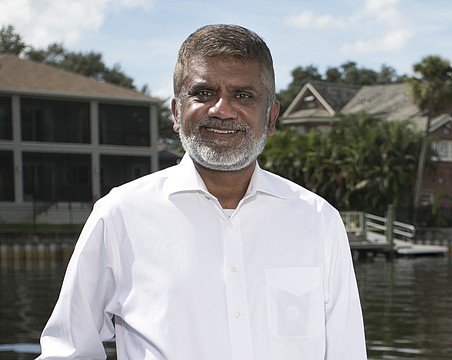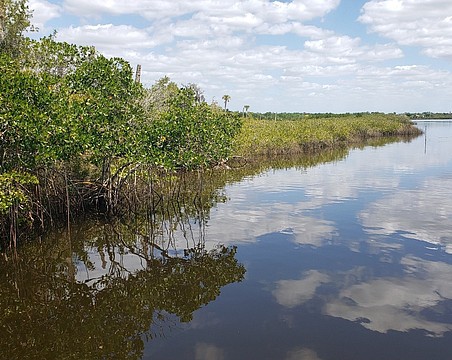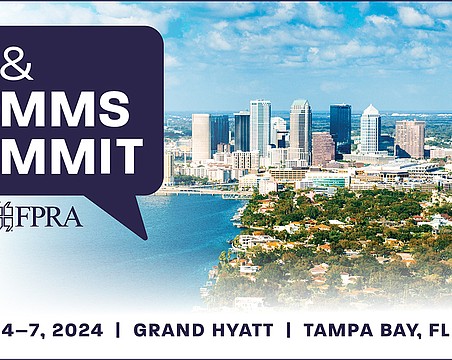Tax funding won't solve gridlock; it's time for tolls
Rod Thomson
Executive Editor
The growing transportation quagmire along Florida's Gulf Coast is more than a convenience issue. It represents an integral part of the economy - one important enough to be a drag on business, employment and quality of life if we don't get it right.
And we don't have it right. The evidence is abundant. Reform is necessary, but time and special interests conspire against it.
Starting at the northern end, Tampa Bay regularly experiences the traffic problems associated with a large metropolitan area. Widening Interstate 4 and the elevated public transit system being built along the Crosstown Expressway are steps, although the latter has all the hallmarks of a coming boondoggle with enormous sums of public money - the costs expected to increase from the original $370 million to as much as $490 million due to last year's column collapse, plus increasing material costs.
The Sarasota-Manatee region also is undergoing strains on its transportation system. There are several "failing" intersections and roads, and it is clear that Interstate 75 will be a parking lot before the state allots money to add lanes, in maybe 25 years.
But perhaps the south end of the Gulf Coast is the biggest argument for the urgency of reform. Through this massively growing region of Lee and Collier counties flows I-75, a two-lane interstate built to the same standards as an interstate crossing the lonely lands of South Dakota. The result is that several exits stack up with cars parked along the shoulder of the interstate every morning while others whizz past at interstate speeds. It is dangerous, inefficient and costly.
The entire region is choking on a road system that does not keep up. But contrary to conventional wisdom, money is not the main problem.
Drive through rural southern Georgia, and you will find a gorgeous new stretch of three-lane I-75. For someone used to Gulf Coast roads, the lack of traffic on it is startling. The numbers prove what the eyes suggest. According to the Georgia and Florida departments of transportation, about three times as many people drive on I-75 through Sarasota County as that stretch of Florida, but they have the same number of lanes. And more people drive through Lee County's northern stretch of I-75 than the Georgia one - yet it is still only two lanes.
As you might suspect at this point, most of this problem is political/bureaucratic, not total monies. Each state collects gasoline tax money, runs it through the Washington bureaucratic mill and gets back some reduced amount. Very reduced, in Florida's case.
The feds return about 88 cents of every dollar collected in federal gasoline taxes, thus making Florida one of the biggest donor states when it also is one of the fastest growing states and the most in need of new roads. There was some reason to the fact that not all states received the same amount of money.
When President Eisenhower set up funding for the interstate system to help the national economy, the sparsely settled, geographically large states such as Montana, Nebraska, the Dakotas, etc., were never going to be able to fund their share. Since such a network was thought to be beneficial to the national economy and hence to all Americans, the subsidizing arrangement was created.
But that is transportation ancient history. Most of the money now goes for maintenance and lots of pork barrel projects, i.e. bridges to nowhere in Alaska and most everything in West Virginia named after Sen. Robert Byrd. It also goes to subsidize subway systems in New York City, Boston's infamous "Big Dig" and mass transit systems everywhere. In fact, New York, Massachusetts and other Northeastern states are net recipients. Those two states get more than $5 billion more in gas tax allocation than their residents pay in gas taxes, while Florida, Texas and California receive more than $5 billion less than their residents pay.
Put together, this means we are short hundreds of millions of dollars partially so that Manhattanites don't have to pay more to ride the subway. Consider that the next time you are in bottleneck traffic.
Lee County Commissioner John Albion is one of the few elected officials to take the problem seriously enough to mount a crusade. He's calculated Florida's annual loss at $228 million. Over a few years, that reaches a billion dollars in lost road money and that represents a lot of congestion. But his voice isn't a peep in the verbal tsunamis of Washington, D.C.
Frankly, there is probably no way to reform the system as constituted. Even if the formula is changed, it always will be susceptible to political shenanigans. The least step that should be taken is to remove the federal government from the process, leaving only enough in federal coffers to cover shortfalls in low-population states.
This would be an improvement under the rubric of: that government is best which is closest to the people. Tallahassee is better than D.C. because it is closer to the people. As much as possible, the responsibility should be pushed downward to the county level from there because Southeast Florida, with its political clout, is already a black hole for transportation spending.
A better route would be to privatize the whole shebang. With technology reaching the point it's at, turning interstates into toll roads involves minimal inconvenience. In Southern California, motorists simply drive through toll booths and a card on their dashboard is automatically billed, much like the transponders being used in Tampa on the Crosstown Expressway. This becomes a direct user-fee, and if the use of the roads is connected with the funding - as is done in the private sector, road-building will keep pace with demand.
In fact, Lee and Collier counties are already pursuing this idea. Unwilling to wait for the politicians to fulfill their responsibilities, the two counties have created a toll authority that could build toll lanes in the middle of I-75, using the non-stopping toll method and relieving horrendous traffic congestion.
The concept works as more and more roads are toll roads. The only difference is to remove them from government control. The market will determine where roads need to be far more efficiently than politicized government. Nothing in the history of common sense suggests that government is doing it better than the private sector would.
E-mail Rod Thomson at [email protected].





